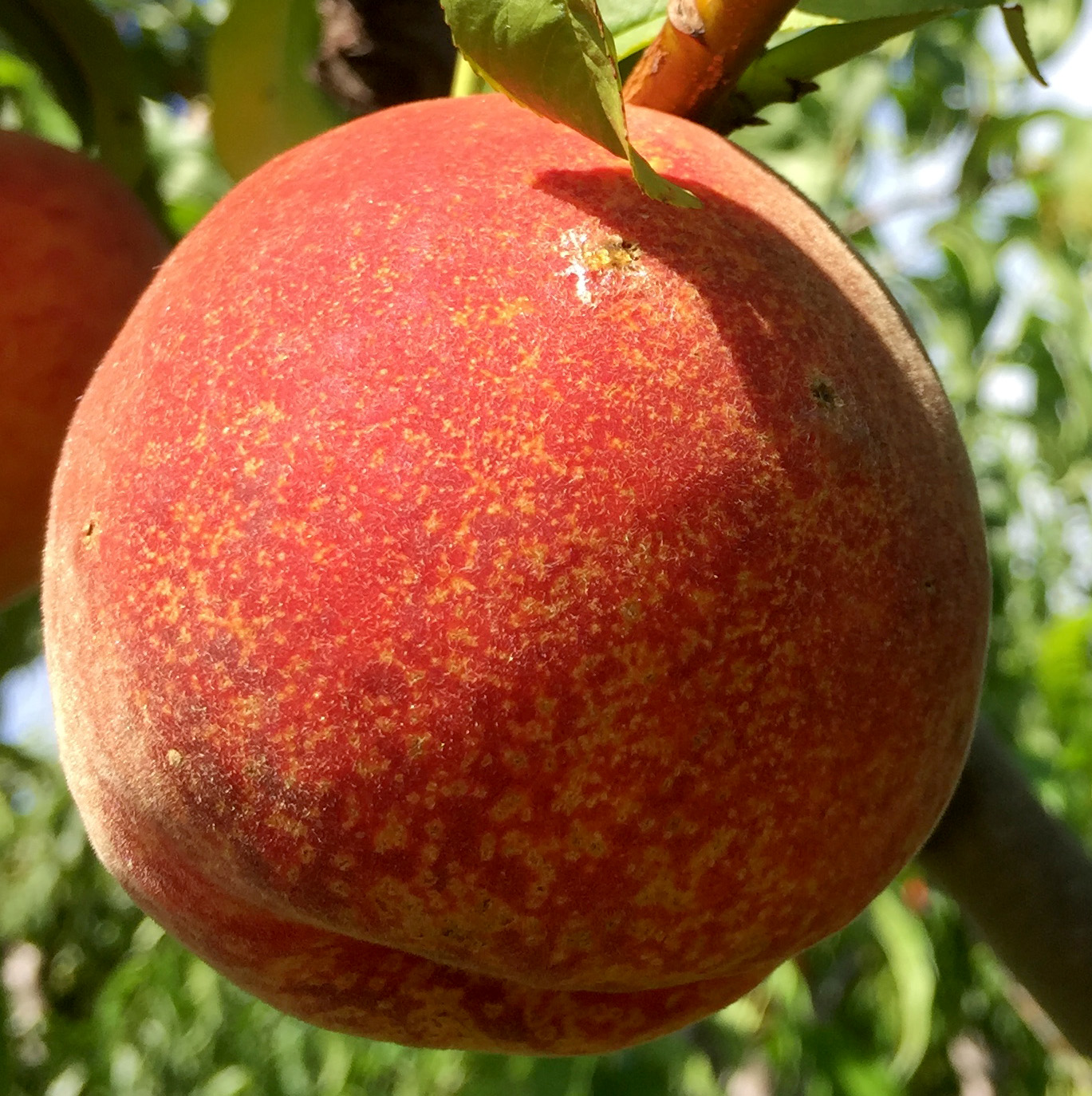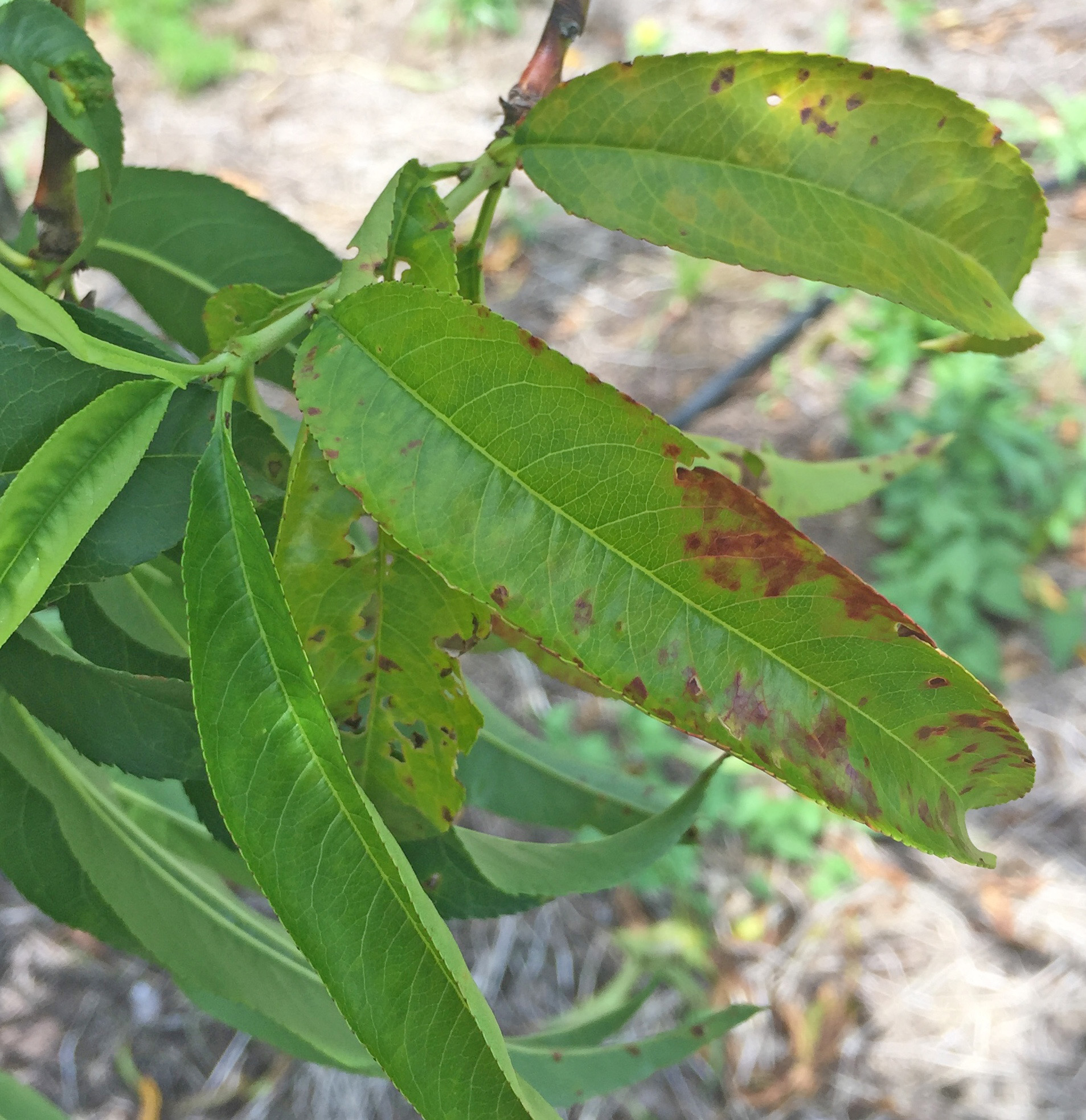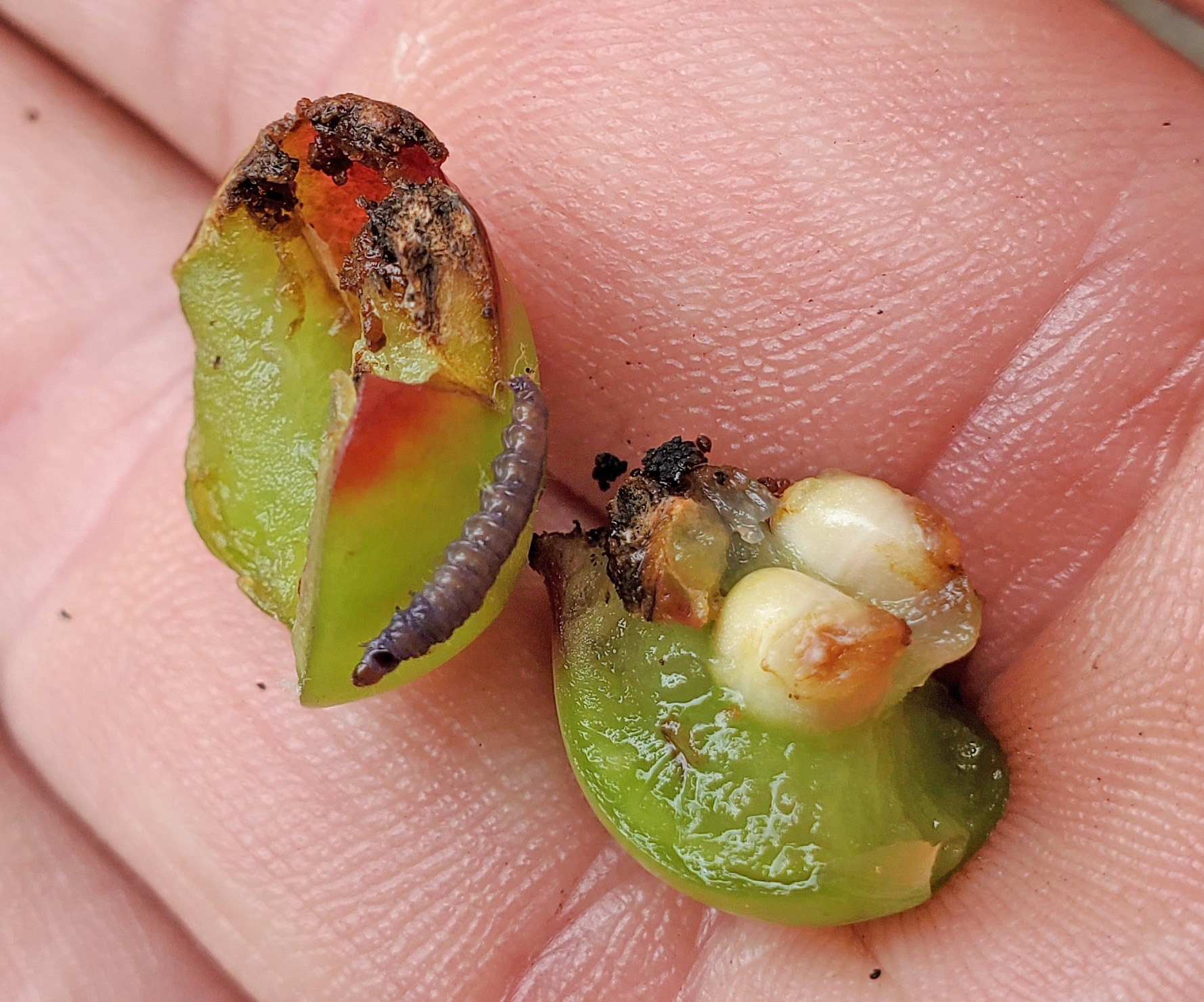Southwest Michigan fruit update – July 21, 2020
Berry harvest continues. Peach and plum harvests have begun. Spotted wing Drosophila numbers are starting to climb.

Weather
Most of last week was warm and humid. Cold fronts came through on Wednesday, July 15, and Sunday, bringing cooler air and rain. Total rain for the week was just over a half inch. The coming week will be similar to the last, starting cool with highs near 80 that will climb to near 90 over the weekend. Rain is likely Wednesday into Thursday. With the variable week, we picked up an average number of growing degree days (GDD) last week: 216 GDD base 42 and 160 GDD base 50, respectively 31 and 23 per day.
|
Southwest Michigan GDD summary from March 1 - July 19, 2020 | |||
|---|---|---|---|
|
Station |
GDD 42 F |
GDD 45 F |
GDD 50 F |
|
Benton Harbor (SWMRC) |
2228 |
1933 |
1490 |
|
Lawton (Lawton) |
2210 |
1912 |
1465 |
|
Fennville (TNRC) |
2043 |
1757 |
1327 |
|
Average for the SW region |
2190 |
1896 |
1453 |
|
Average last week |
1974 |
1701 |
1293 |
Tree fruit
Oriental fruit moth flight for the first half of July was relatively high for some area orchards and larvae from this population will be looking for fruit to enter. Codling moth and obliquebanded leafroller flights are starting. Lesser and greater peach borer flights appear to be in decline. Grasshoppers are causing problems on foliage of young trees close to mowed fields. Deer are browsing on young plantings.
Peach varieties being harvested include Harrow Diamond and Brightstar, with Early Red Haven soon to start. Split pits are a problem in early varieties this year. Brown rot is showing up on fruit damaged by birds and insects. The estimated harvest date for Red Haven in central Berrien County for 2020 is Aug. 4. X-disease symptoms are showing up on leaves. Oriental fruit moth larvae entries into fruit are being seen now. Leaf drop and fruit marking due to bacterial spot is showing up on susceptible varieties. Fruit speckles due to bacterial spot is common on varieties with fruit resistance but poorer leaf resistance to this disease.


In cherries, sweet and tart cherry harvests are complete. Cherry leaf spot symptoms are common in the tops of many trees. To prepare the trees for the winter and next year’s crop, continue to protect the leaves from cherry leaf spot. See “Low spray programs for tart cherry.”
In plums, several early varieties of Japanese plums are being picked. Brown rot is showing up on fruit damaged by insects.
Apple fruit range from 1.5 to 2 inches in diameter. Current hot, sunny conditions could start to induce sunscald symptoms on exposed fruit. Use of sunlight-blocking treatments may be warranted. The sooty blotch and flyspeck model on Michigan State University Enviroweather predicts that infections of these diseases are likely established in orchards and need ongoing treatment, with reapplication when rain has likely reduced coverage.
Apple maggot emergence is increasing. Traps should be placed to monitor susceptible sites. Potato leafhopper and green aphid populations are building on tender leaf tissue. Obliquebanded leafroller larvae are rolling leaves. Codling moth and oriental fruit moth entries into fruit are showing up now.

Pear Bartlett fruit are large enough to be susceptible to codling moth damage. Pear psylla continue to become easier to find. Russeting of fruit and leaves is showing up in some orchards, probably due to slight chemical phytotoxicity during recent hot weather.
Small fruit
Spotted wing Drosophila (SWD) numbers are starting to rise in southwest Michigan with the cooler, humid weather. We expect SWD numbers will climb quickly with ripe berries in the woods as well as abundant blueberries, and raspberries.
Most grapes are at berry touch or bunch closing. The disease focus is on preventing downy mildew and powdery mildew infections. Choose fungicides carefully to control both diseases. Downy mildew favors wet conditions, and we are starting to get heavy dews in the morning. Powdery mildew prefers high humidity and warm weather. As clusters close, this is the last chance to put materials for botrytis bunch rot into the cluster interior. To manage this disease at harvest, good fungicide coverage is needed inside clusters now.
Grape berry moth larvae are being found. Maintain good insecticide coverage for the remainder of the season for this pest. For information on what to use and when, see: “Mid-season management of grape berry moth.”

Blueberry harvest is well underway. Machine harvest of Bluecrop is common. Phomopsis cane collapse continues to appear. Under the hot, dry conditions, growers struggled to maintain their irrigation. Growers with overhead irrigation should also focus on protecting against anthracnose. For fungicide recommendations, see “Blueberry growers need to focus on Anthracnose fruit rot as bloom ends.” Use systemic fungicides, which are absorbed into the plant reducing fungicide wash off from sprinkler applications.
There are some leafroller larvae and other insects out but not in numbers that need control. Blueberry maggot are being caught but since most growers maintain a strict coverage for SWD, blueberry maggot has become a minor pest. Many fields have ripe berries in them now, even fields of Jersey, which will not be harvested for a week or two. Many growers will not be harvesting processing berries because of low prices. These fields will serve as SWD nurseries and increase the numbers of flies in and around sprayed fields. SWD numbers usually climb quickly in late July.
Strawberries have new growth in renovated fields. Maintain protection against potato leafhopper and leaf spot diseases.
Bramble harvest of summer red raspberry continues. SWD is the major insect pest of brambles and can destroy the crop quickly. Treat SWD as a disease and focus on keeping it out rather than letting this pest become established. Pick ripe fruit frequently so that ripe fruit are not available to the pest for very long.
Currants harvest is ending.
Cranberry have small fruit.
Upcoming meetings
This year’s Viticulture Field Day has moved online. Instead of a full day program, the event will include five days of lunchtime webinars highlighting one MSU researcher’s viticulture work. The event will be held July 27-31 from 12-12:45 p.m. each day. View event details and registration information.
Related resources
- Southwest Michigan fruit update – July 14, 2020
- Low spray programs for tart cherry.
- SDHI fungicides for apple scab management
- Michigan grape scouting report – July 15, 2020
- Managing botrytis bunch rot in grapes
- Irrigating Michigan blueberries
- Michigan spotted wing Drosophila update – July 14, 2020
- Blueberry growers need to focus on Anthracnose fruit rot as bloom ends
- Michigan Blueberry Facts: Anthracnose Fruit Rot
- Mid-season management of grape berry moth



 Print
Print Email
Email
